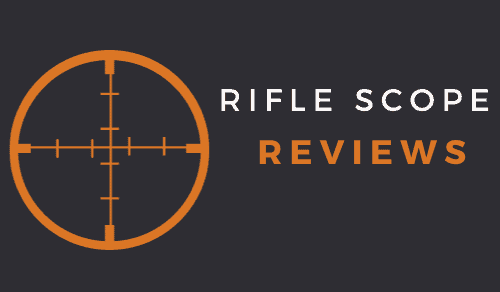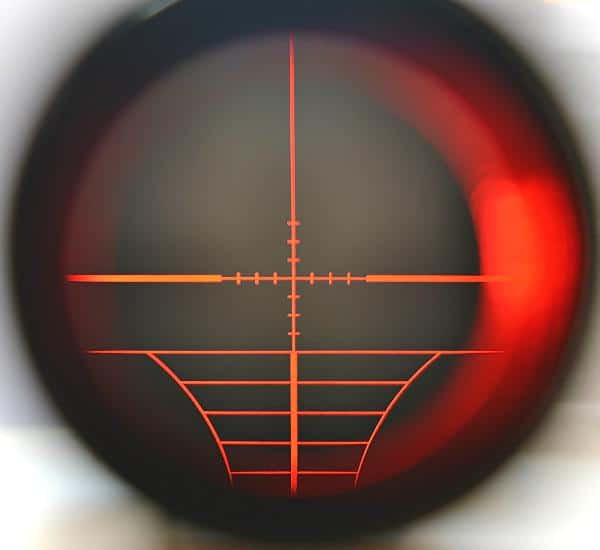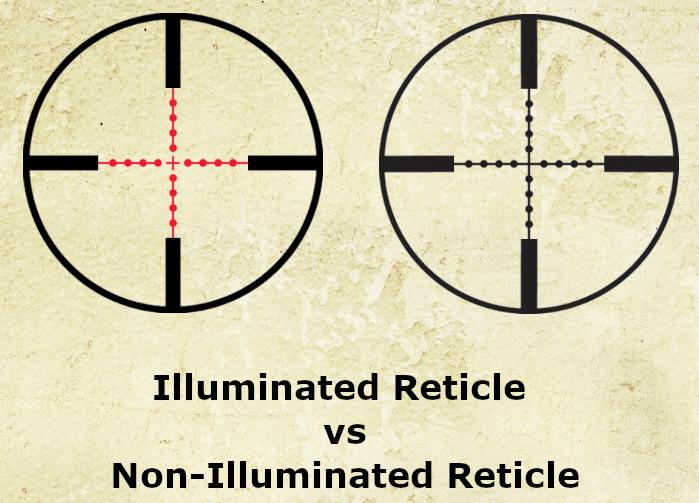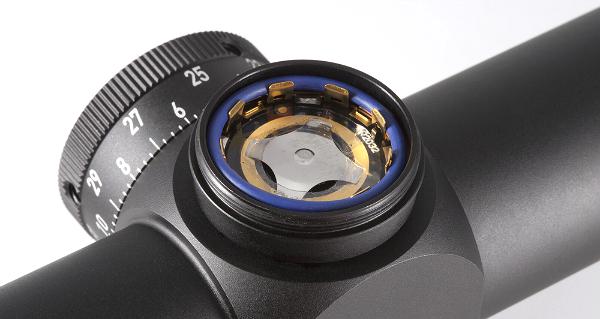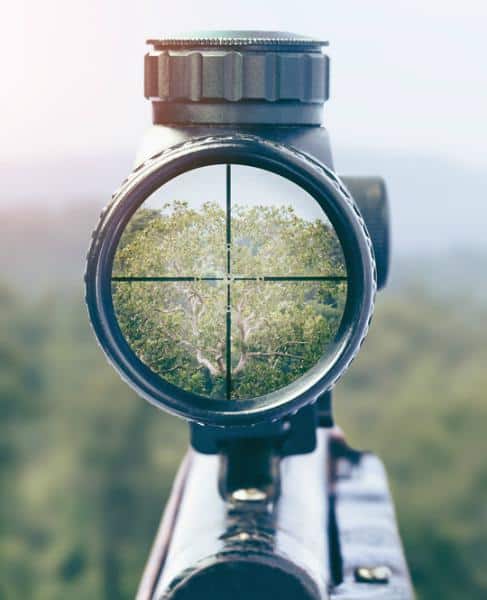As an Amazon Associate I earn from qualifying purchases. Amazon and the Amazon logo are trademarks of Amazon.com, Inc, or its affiliates.
When discussing rifle scopes and their various features, few topics seem to be more misunderstood than the topic of reticle illumination. In addition to being misunderstood, most hunters and shooters are not on the fence about illuminated reticles: they either swear by them or believe that they are useless. So, let’s take a few minutes and discuss the following topic: illuminated reticle vs non-illuminated reticle.
What is an illuminated Reticle?
While the answer is pretty simple, people seem to make the solution more complicated than it needs to be. An illuminated reticle is simple a rifle scope reticle that features the ability to light up or illuminate. Now that illumination can be powered by electrical components and a battery, or powered by ambient light.
The electrical components approach is the more common of the two, but the ambient light approach is gaining in popularity. With the ambient light approach, the reticle absorbs ambient light, making it glow for some time as the natural light fades out.
Both illumination methods work, although I find that the solutions powered by ambient light are not as effective at dawn and first light as they have to be powered by artificial light (flashlight) in order to glow, so I prefer the battery-powered option over the ambient approach.
What’s the Advantage of an Illuminated Reticle?
The idea behind an illuminated reticle or (lighted reticle as they are sometimes called) is to provide a contrast between the reticle and the target so the reticle can be seen. Even in broad daylight, there will be situations where a non-illuminated reticle is not visible.
For example, I’ve seen deer standing in the shadow of the dense thicket or fir tree, with the sun behind them, and the scope reticle disappears against the shadow. Situations like that are precisely why illuminated reticles were invented.
Illuminated scopes or illuminated reticles do not light up the target. The illumination makes the reticle visible against a dark background.
Pros and Cons of an Illuminated Reticle
| Pros | Cons |
| When used, the reticle can be clearly seen in almost any hunting or shooting situation
The illumination feature can be turned off or on as needed | The components used in the illumination process add weight to the scope.
The electrical components used in the illumination process have a much higher failure rate compared to the essential scope components The illumination is battery powered, which have to be replaced periodically The illumination components feature a shorter warranty coverage period The illumination feature adds to the overall cost of the scope |
As you can see, the cons outweigh the pros for the most part. However, I still think an illuminated scope is worth considering, especially for low light hunting situations.
There are many common misconceptions about illuminated reticles, and I’ll try to address the more common ones below:
Illuminated reticles make a scope too heavy
While an illuminated reticle and the related components associated with it, do add some weight to the scope, that weight is usually only a very slight bit. Typically the added weight comes in around 1 ounce or less.
In reality, the difference between a 23-ounce scope and a 24 ounce isn’t much, so the added weight counter-argument doesn’t carry all that much validity.
If you have to have an illuminated reticle, then its too dark to shoot
To be clear, an illuminated reticle does nothing to add any light to the target. The illumination is designed to make the reticle visible against a dark background.
While the laws vary state to state, most states have rules about legal shooting times, saying that a hunter can shoot 30 minutes before sunrise and 30 minutes after sunset. Those 30 minutes before and 30 minutes after are really where an illuminated reticle can be useful.
So, I’d have to disagree that an illuminated reticle is only useful for shooting after legal shooting times.
Now that’s not to say that an illuminated reticle couldn’t be used unethically, but I’m sure some unethical hunters spotlight and shoot deer at night using a non-illuminated reticle as well.
Illuminated scopes are more expensive
That’s more a statement of half-truths, but it has some accuracy to it. If you compared two of the same scope model, with one being non-illuminated and the other being illuminated, the illuminated reticle version would be the more expensive of the two.
But, here’s the real question: is the additional cost for illumination worth it?
Considering that most game species are most active during the very early morning and near dark periods, I would suggest that an illuminated reticle is worth considering if the added cost doesn’t exceed your budget.
So, would you recommend a scope with an illuminated reticle?
I would say the following:
- If you are shopping for a scope to put on a hunting rifle, I’d consider an illuminated reticle scope as an option. It may offer you the opportunity for a shot on game animals that you wouldn’t be able to take with a non-illuminated reticle. Personally, I prefer illuminated reticles for most hunting scenarios.
- If you are shopping for a long-range or target shooting scope, I don’t feel that they illuminated reticle offers all that much benefit over a standard reticle.
- If you are extremely weight-conscious about your rifle or shotgun, then the slightly extra weight of an illuminated scope mot be worth the benefit.
FAQS
Here are some frequently asked questions that I’ve seen regarding illuminated reticles vs non illuminated reticles:
Are illuminated scopes legal for hunting?
For starters, I would suggest checking with the appropriate wildlife or fish and game authorities where you hunt to confirm the legality of hunting with an illuminated scope, rather than assume and potentially get yourself in some legal trouble.
Now, having hunted across several states, and outfitted many hunters who have hunted across the United States, I am not aware of a single instance where an illuminated reticle was ruled as being illegal for hunting purposes.
Keep in mind that the illuminated reticle does illuminate the target or add any illumination to the target, so it really can’t be considered any lighting of the game animal.
Also, illuminated reticles technology does not use any of the following:
- Infrared, night vision, or heat-based technology
- Laser technology for determining distances
- Or, project a light source out to aid accuracy.
Looking at all those factors combined, an illuminated reticle “should” be perfectly legal to use. Again, as a disclaimer, I’ll suggest that you confirm that appropriately in your area before using one for hunting.
Is an illuminated reticle worth the extra cost?
The variously worded questions about an illuminated reticle being worth the money are hard ones to answer because they are subjective questions that include a variety of variables.
At the end of the day, only you can answer that question for yourself because it is your money being spent, you behind the rifle or shotgun, and you deciding what’s important or not important.
What happens if I buy an illuminated scope but don’t like the illuminated reticle?
Well, you’ve got a couple of options moving forward:
- You could try to resell the scope and recoup some of your money
- See if it’s eligible to be returned
- Or, if you like everything about the scope except the illuminated reticle, just turn the illumination off. The illumination is just like almost every other electrical device as it comes with an on/off switch.
As I come across more content or questions related to illuminated reticles, I’ll try to update this page.
I’ve been working in the firearms and sporting optics industry for over 20 years, with a personal and professional interest in all things related to rifle scopes, Through a combination of work experience, formal training, and personal experiences, I have extensive experience mounting, testing, and evaluating different rifle scope models across most major optical brands.
